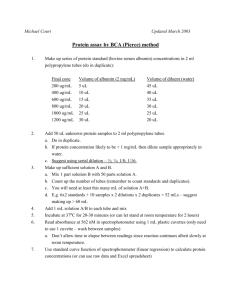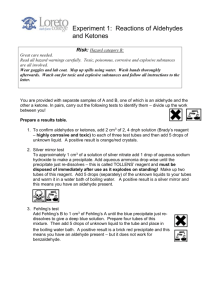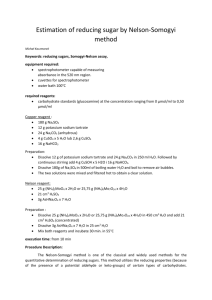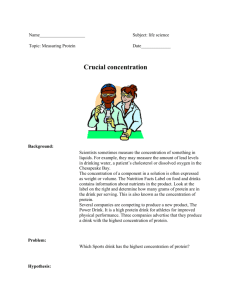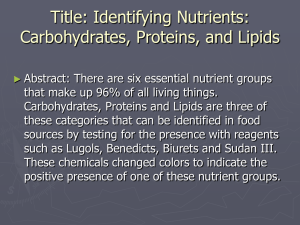Estimation of reducing sugar by dinitrosalicylic method
advertisement
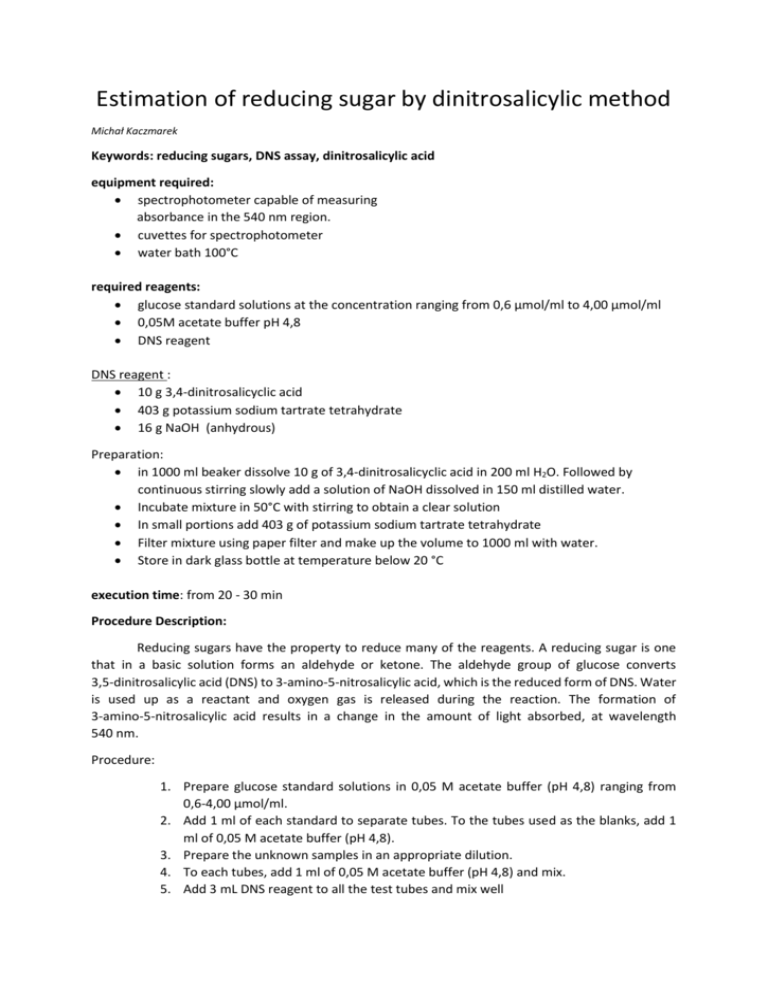
Estimation of reducing sugar by dinitrosalicylic method Michał Kaczmarek Keywords: reducing sugars, DNS assay, dinitrosalicylic acid equipment required: spectrophotometer capable of measuring absorbance in the 540 nm region. cuvettes for spectrophotometer water bath 100°C required reagents: glucose standard solutions at the concentration ranging from 0,6 µmol/ml to 4,00 µmol/ml 0,05M acetate buffer pH 4,8 DNS reagent DNS reagent : 10 g 3,4-dinitrosalicyclic acid 403 g potassium sodium tartrate tetrahydrate 16 g NaOH (anhydrous) Preparation: in 1000 ml beaker dissolve 10 g of 3,4-dinitrosalicyclic acid in 200 ml H2O. Followed by continuous stirring slowly add a solution of NaOH dissolved in 150 ml distilled water. Incubate mixture in 50°C with stirring to obtain a clear solution In small portions add 403 g of potassium sodium tartrate tetrahydrate Filter mixture using paper filter and make up the volume to 1000 ml with water. Store in dark glass bottle at temperature below 20 °C execution time: from 20 - 30 min Procedure Description: Reducing sugars have the property to reduce many of the reagents. A reducing sugar is one that in a basic solution forms an aldehyde or ketone. The aldehyde group of glucose converts 3,5-dinitrosalicylic acid (DNS) to 3-amino-5-nitrosalicylic acid, which is the reduced form of DNS. Water is used up as a reactant and oxygen gas is released during the reaction. The formation of 3-amino-5-nitrosalicylic acid results in a change in the amount of light absorbed, at wavelength 540 nm. Procedure: 1. Prepare glucose standard solutions in 0,05 M acetate buffer (pH 4,8) ranging from 0,6-4,00 µmol/ml. 2. Add 1 ml of each standard to separate tubes. To the tubes used as the blanks, add 1 ml of 0,05 M acetate buffer (pH 4,8). 3. Prepare the unknown samples in an appropriate dilution. 4. To each tubes, add 1 ml of 0,05 M acetate buffer (pH 4,8) and mix. 5. Add 3 mL DNS reagent to all the test tubes and mix well 6. Place the tubes in a boiling water for 5 minutes 7. Cool the tubes to room temperature and measure the absorbance at 540 nm.
